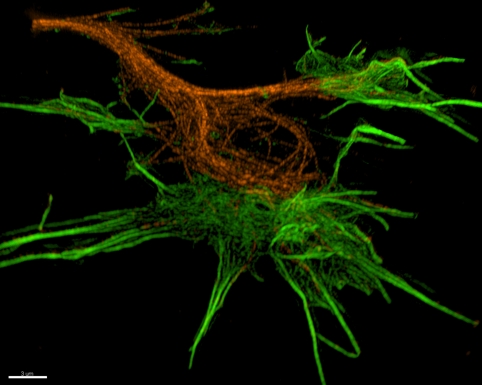
Whole-cell patch clamp electrophysiology, or whole-cell recording (WCR), has been used since the 1970s to study neurons in mammal brains. By looking at the electrical activity of individual neurons in a live brain, the technique can be used to build a picture of the function of the entire organ.
However, because of the small scale of the equipment and the microscopic nature of the cells involved, WCR is notoriously challenging to perform. It also requires very precise movements to find neurons and then record their electrical currents accurately. Therefore only a small number of laboratories worldwide specialise in the technique.
In an effort to address these limitations the Imperial team, led by Prof Simon Schultz and Dr Luca Annecchino, has developed a robot and computer programme that can guide tiny measuring devices called micropipettes to specific neurons in the brains of live mice and record electrical currents, all without human intervention. This is the first reported fully automated platform to do this.
Prof Schultz said: “To understand the brain as a whole organ, we need to know how neurons work and communicate with one another. The WCR technique is a way to eavesdrop on these cells and how they communicate with their neighbours……now we have taught robots to ‘see’ the neuron and perform the procedure even better. This means WCR can now potentially be performed on a much larger scale, which could speed up our learning about the brain and its disorders.”
Next, the researchers will study how brain circuits are disturbed by the amyloid plaques seen in Alzheimer's disease. Dr Annecchino added: “Ultimately, the problems in Alzheimer's result from changes in the information processing capability of networks of individual brain cells. This is exactly what we can monitor with the technique.”
A paper on the research has been published in the journal Neuron










Comment: The UK is closer to deindustrialisation than reindustrialisation
"..have been years in the making" and are embedded in the actors - thus making it difficult for UK industry to move on and develop and apply...